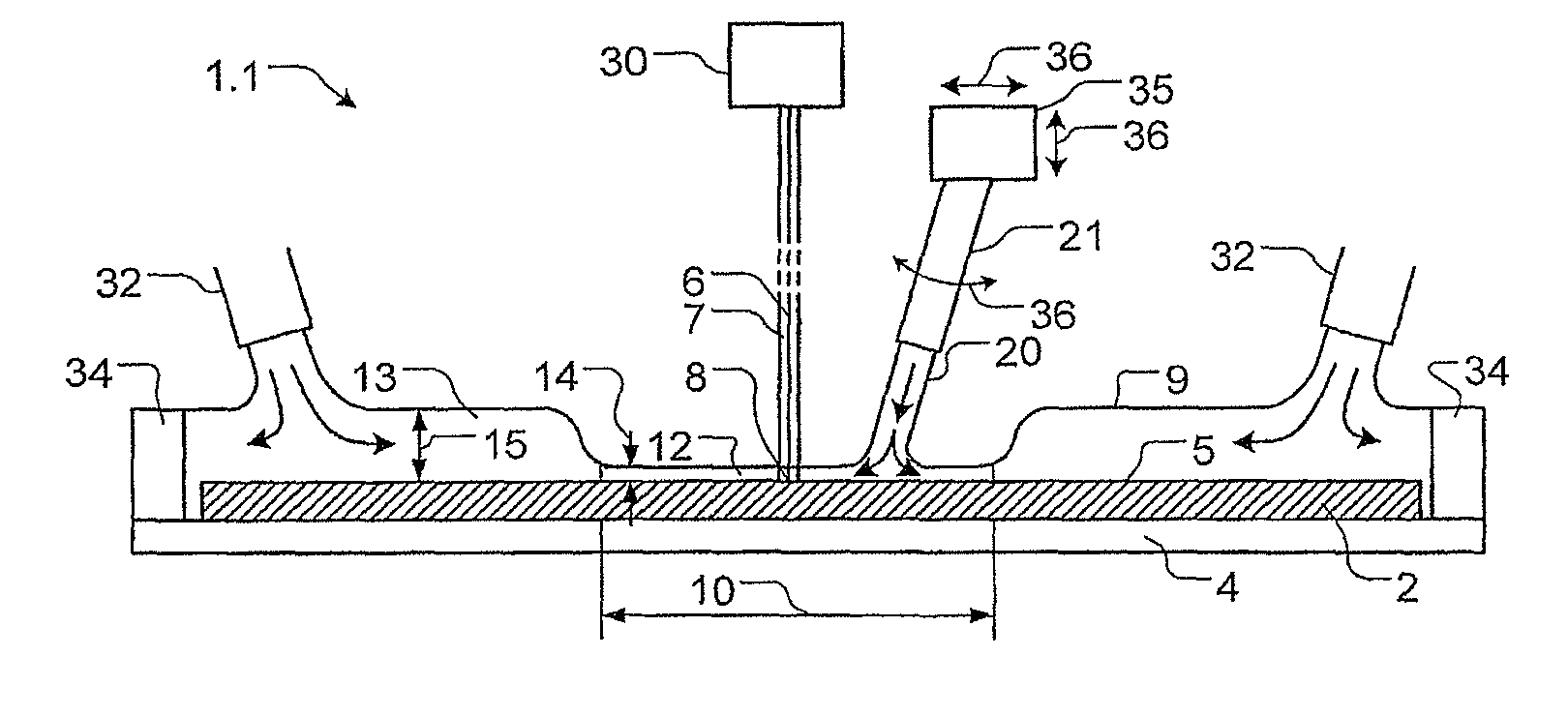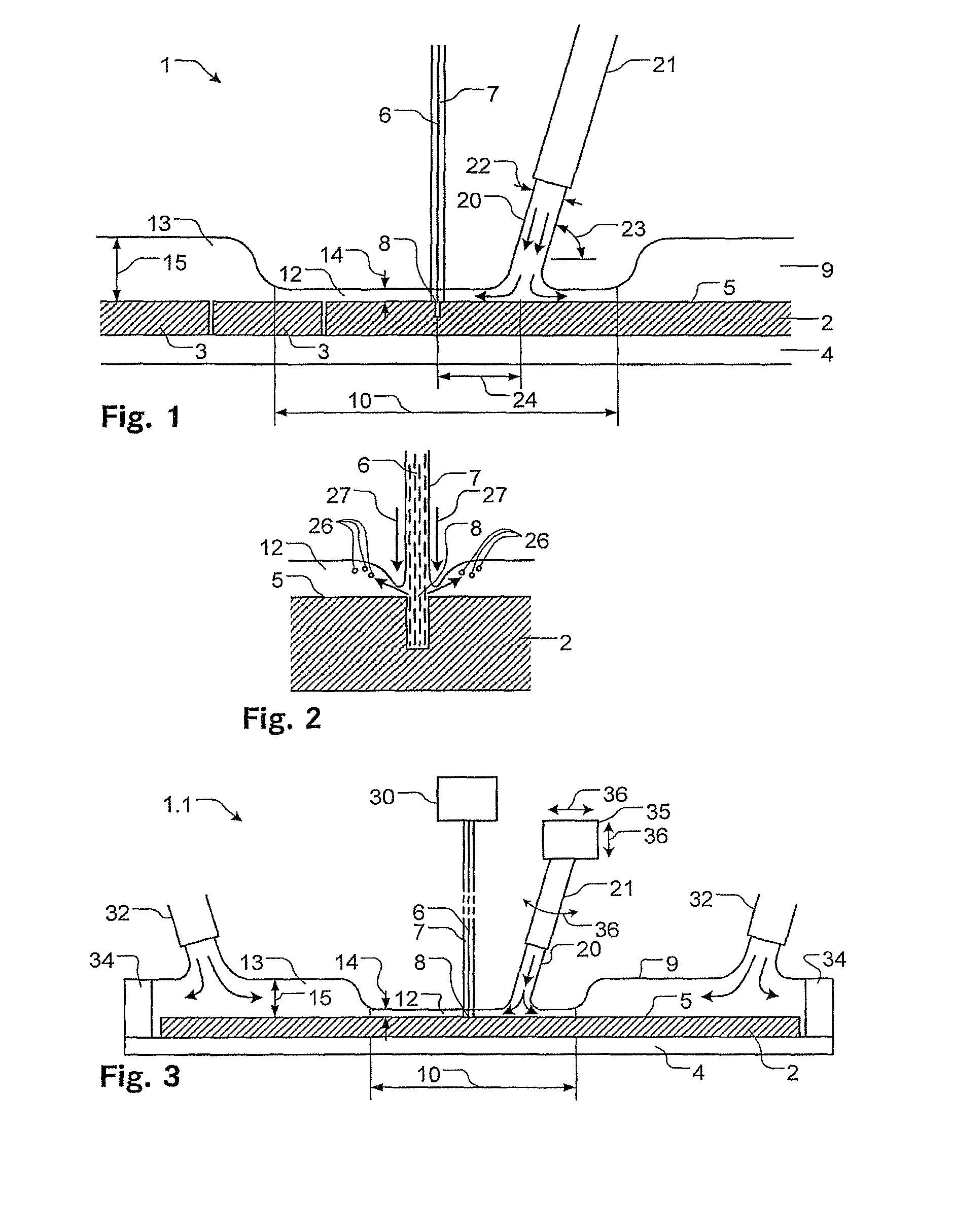Laser machining of a workpiece
a technology of workpieces and lasers, applied in the direction of laser beam welding apparatus, basic electric elements, electrical apparatus, etc., can solve the problems of only difficult control of the thickness of the liquid layer, the inability to efficiently and accurately machining the workpiece, and the inability to use cutting gas, so as to achieve the effect of efficiently machining the workpiece and preventing the ejection of the liquid layer
- Summary
- Abstract
- Description
- Claims
- Application Information
AI Technical Summary
Benefits of technology
Problems solved by technology
Method used
Image
Examples
Embodiment Construction
[0051]Identical parts are basically given the same reference symbols in the figures.
[0052]FIG. 1 shows a diagrammatic illustration of part of a device 1 according to the invention for machining a workpiece, a wafer 2 in the present example. The wafer is a silicon disk on which a multiplicity of integrated circuits are produced in a known way. The machining of the wafer 2, then, involves cutting the circuits, also called chips 3, out of the wafer 2. Wafers of this kind are, as a rule, round and have a diameter of the order of a few dozen to a few hundred millimeters and a thickness in the range of a few dozen to a few hundred micrometers.
[0053]The wafer 2 is fastened on a carrier 4. The wafer 2 is held on the carrier 4, above and below the latter, for example by means of a pressure difference. For example, the ambient or atmospheric pressure prevails above the carrier 4. Below the carrier 4, a greater or lesser vacuum is generated. Since the carrier 4 itself is made air-permeable, fo...
PUM
| Property | Measurement | Unit |
|---|---|---|
| thickness | aaaaa | aaaaa |
| thickness | aaaaa | aaaaa |
| thickness | aaaaa | aaaaa |
Abstract
Description
Claims
Application Information
 Login to View More
Login to View More - R&D
- Intellectual Property
- Life Sciences
- Materials
- Tech Scout
- Unparalleled Data Quality
- Higher Quality Content
- 60% Fewer Hallucinations
Browse by: Latest US Patents, China's latest patents, Technical Efficacy Thesaurus, Application Domain, Technology Topic, Popular Technical Reports.
© 2025 PatSnap. All rights reserved.Legal|Privacy policy|Modern Slavery Act Transparency Statement|Sitemap|About US| Contact US: help@patsnap.com


